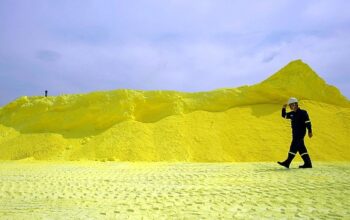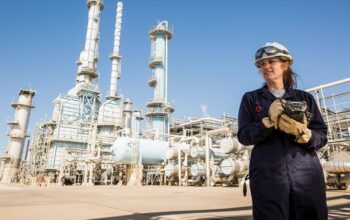Also known as a Cat Cracker, the Fluid Catalytic Cracking Unit (FCCU) is a piece of refining equipment used to convert the heavy portion of crude oil feedstock into lighter petroleum products, including liquified petroleum gas and gasoline.
FCCUs use a chemical process known as cracking to break down large hydrocarbon molecules into smaller molecules . It get done by exposing them to a catalyst and extreme heat. Common catalysts include zeolite, bauxite, silica-alumina, and aluminum hydrosilicate.
Once the FCCU process is complete, product is then sent to a hydrocracker for further processing.
Since they were introduced in the 1940s, FCCUs have improved the efficiency and output of countless refineries and have become essential to the industry.
Flow diagram and process description
The modern FCC units are all continuous processes which operate 24 hours a day for as long as 3 to 5 years between scheduled shutdowns for routine maintenance.
There are several different proprietary designs that have been developed for modern FCC units. Each design is available under a license that must be purchased from the design developer by any petroleum refining company desiring to construct and operate an FCC of a given design.
There are two different configurations for an FCC unit:
the “stacked” type where the reactor and the catalyst regenerator are contained in two separate vessels. With the reactor above the regenerator, with a skirt between these vessels allowing the regenerator off-gas piping to connect to the top of the regenerator vessel. second is the “side-by-side” type where the reactor and catalyst regenerator are in two separate vessels. The stacked configuration occupies less physical space of the refinery area. These are the major FCC designers and licensors.
Side-by-side configuration:
- CB&I
- ExxonMobil Research and Engineering (EMRE)
- Shell Global Solutions
- Axens / Stone & Webster Process Technology — currently owned by Technip
- UOP LLC – A Honeywell Company
Stacked configuration:
- Kellogg Brown & Root (KBR)



